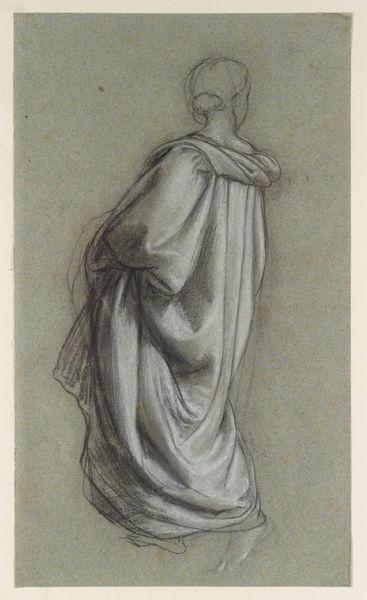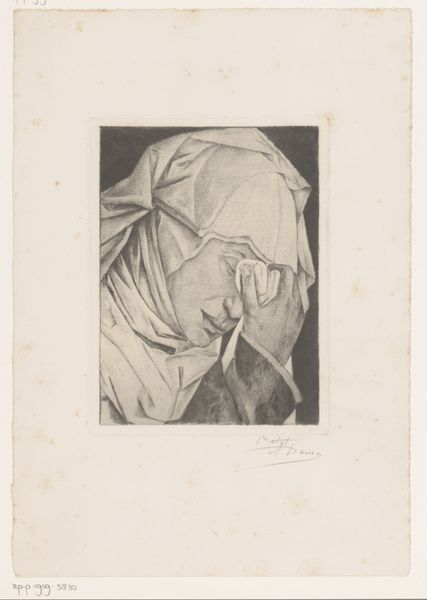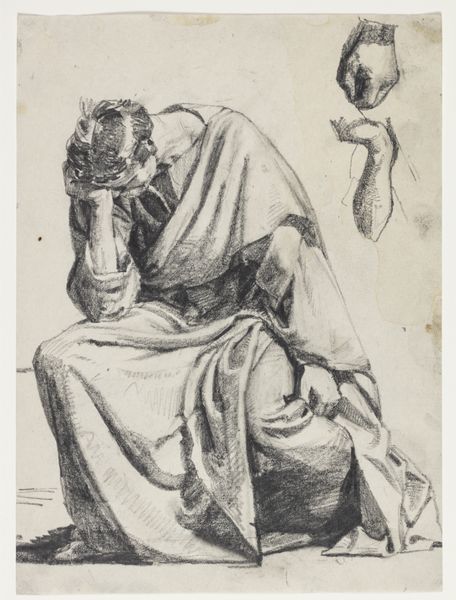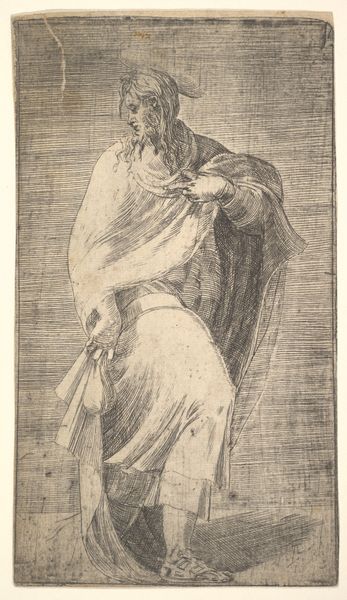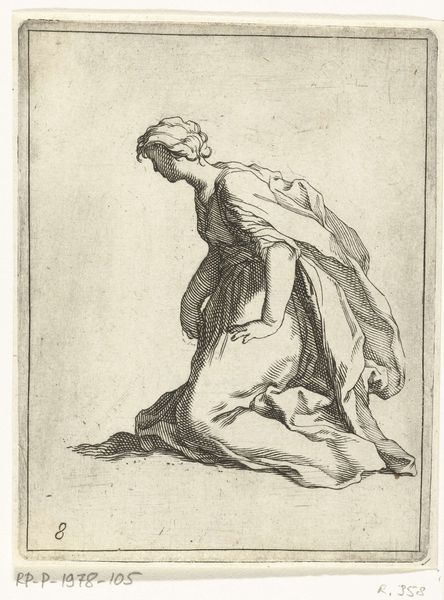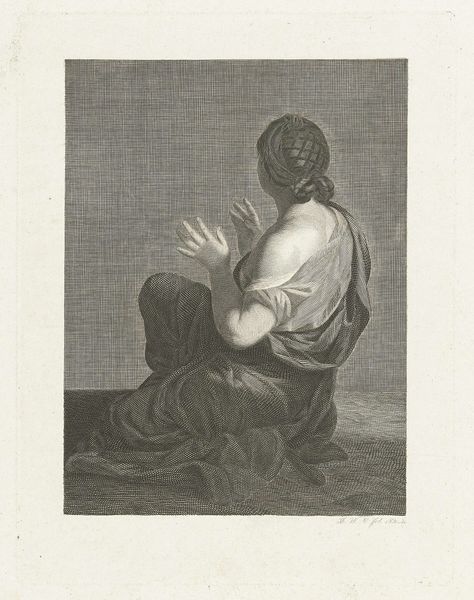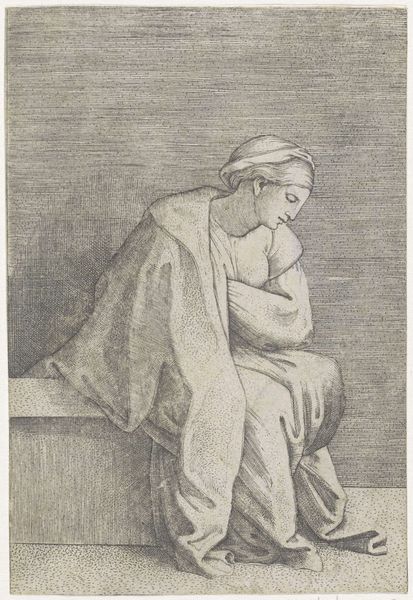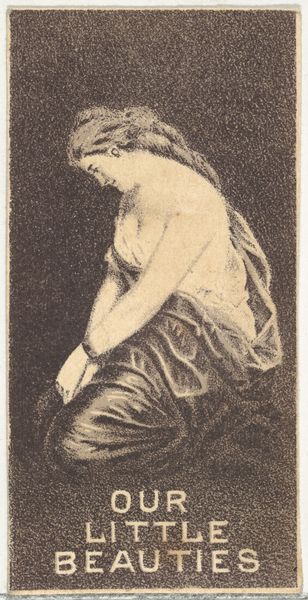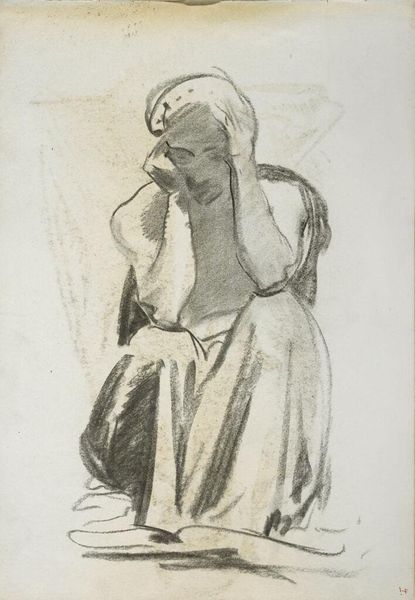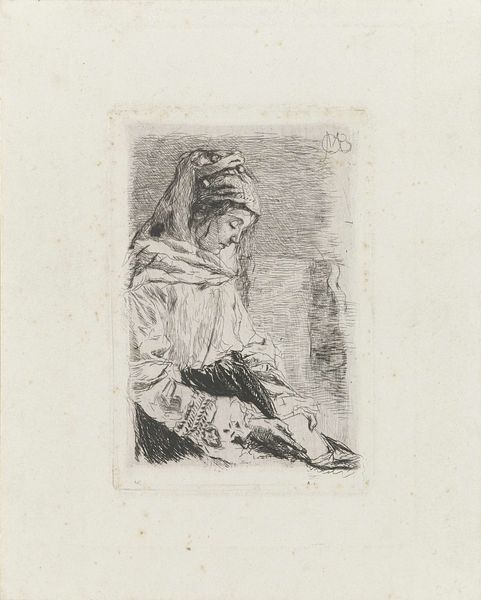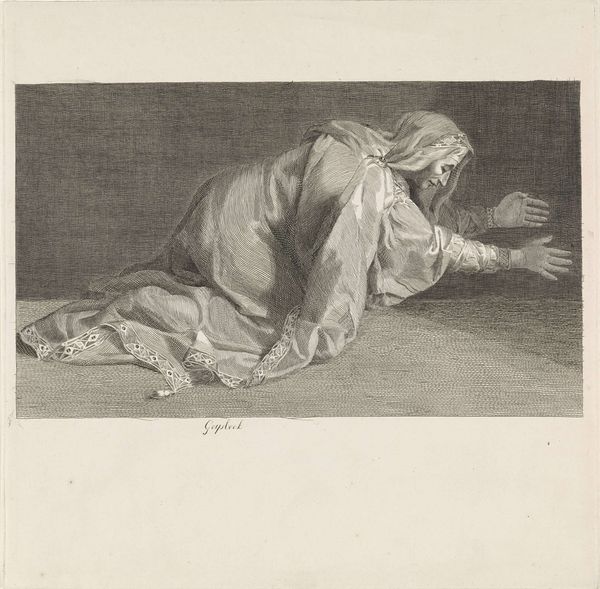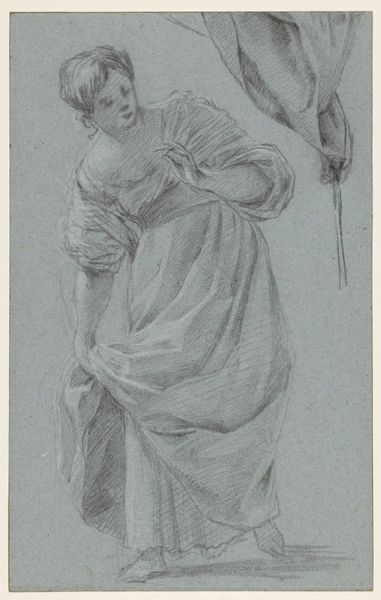
print, engraving
#
portrait
# print
#
old engraving style
#
caricature
#
figuration
#
history-painting
#
engraving
Dimensions: height 264 mm, width 213 mm
Copyright: Rijks Museum: Open Domain
Curator: The somber mood hits you immediately, doesn’t it? It feels heavy, almost sculptural, despite being a relatively small print. Editor: Absolutely. It's interesting to see the print-making techniques employed here; look at the fineness of the engraving, the density of the lines used to build shadow and form. One can almost feel the weight of the woman’s grief through the material execution. Curator: Indeed. This piece, "Treurende vrouw in klassiek gewaad," or "Mourning Woman in Classical Garb," was created by Johannes van der Kellen in 1862. Engravings like these, while seemingly traditional in subject, played a critical role in the circulation of images at the time, allowing art and ideas to disseminate widely. Editor: You are right. It is a fascinating point how reproducible this artwork is, given its melancholic weight, which would become so widespread. Was it exhibited in public saloons or produced to make copies for private domestic devotionals? Curator: Records point to its broad distribution as part of a larger portfolio of prints published around the mid-19th century, which aimed to illustrate key historical figures or moments through a classical lens. The image of a weeping woman was culturally loaded, evoking not just personal loss, but also civic or national lament. Editor: It’s compelling how it speaks to this tension between individual emotion and the projection of larger cultural narratives onto a single image. The figure’s covered face makes it universal, allowing for varied interpretations, while the "classical garb" firmly places her in the established art-historical tradition. Was she perhaps inspired by particular marble sculpture that then the prints seek to immortalize as "history-painting?" Curator: I think, more so, that the engraving speaks volumes about the industrialization of art-making. Think of the labor that went into its creation, replicating what were deemed 'masterpieces', churning out prints for the growing middle class to consume and display. Editor: Interesting. So while appearing somber and reverent, we might read it as part of a broader democratization of art, reflecting shifts in social hierarchies? Curator: Precisely! Perhaps it's that very tension – grief expressed via mass-produced means – that resonates so strongly. Editor: Food for thought, definitely changed my perception of its initial heaviness into something quite multifaceted. Curator: Exactly! It becomes more than just sorrow frozen in time; it mirrors an evolving society grappling with accessibility.
Comments
No comments
Be the first to comment and join the conversation on the ultimate creative platform.
